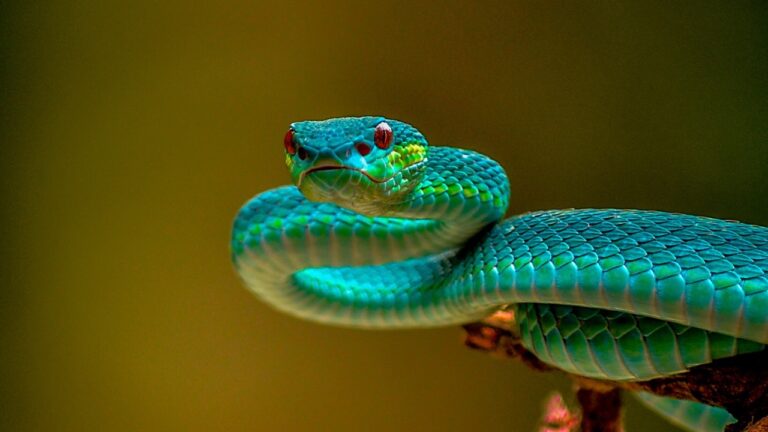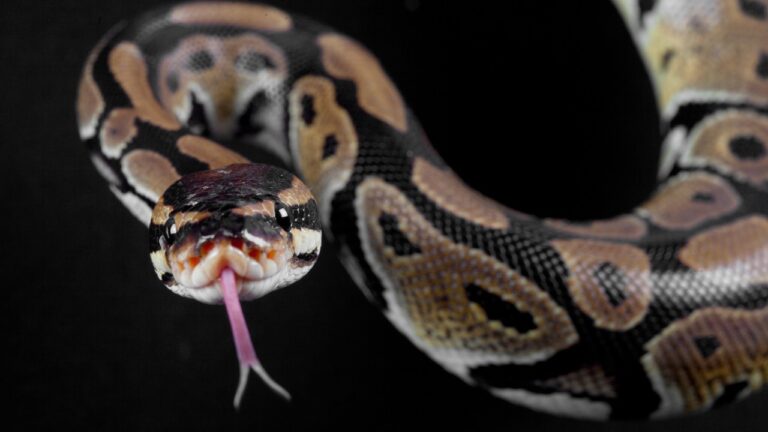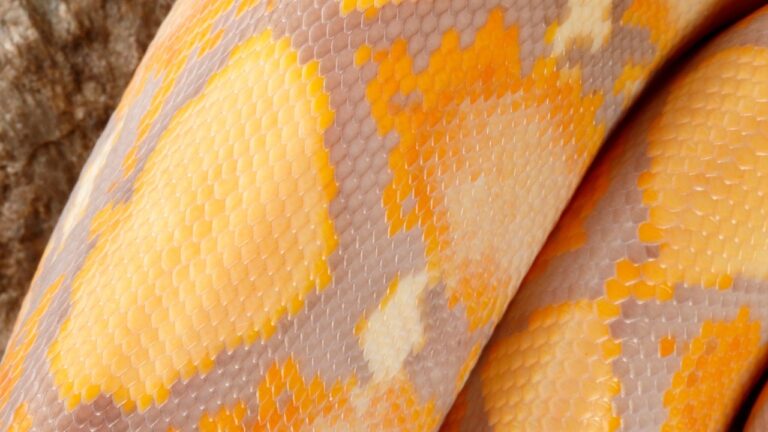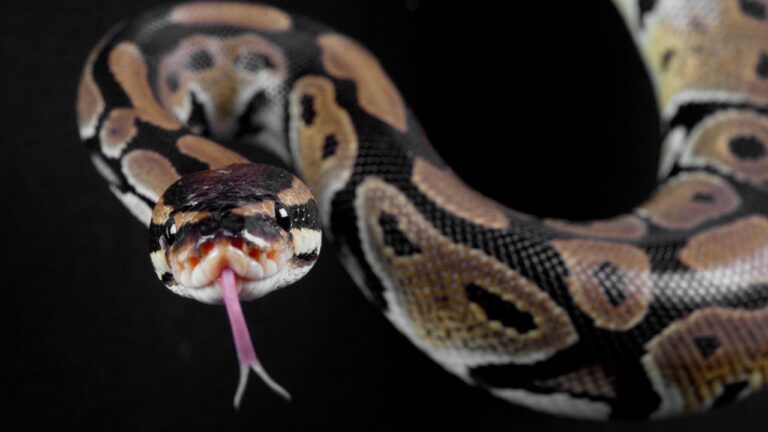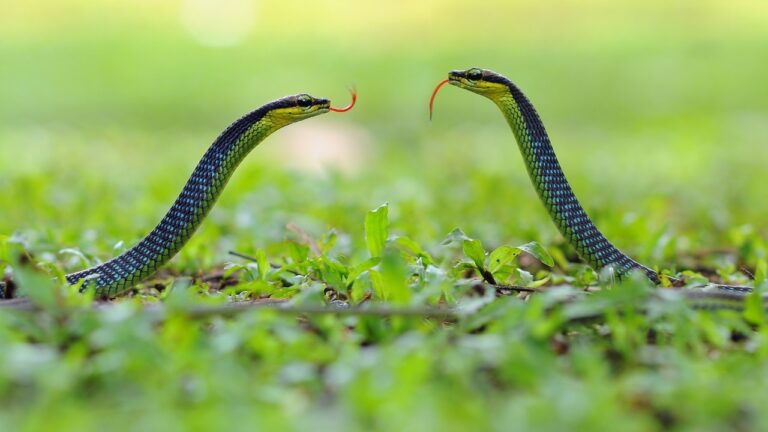Creating a Snake Feeding Schedule: Expert Tips for Snake Food Preparation
Importance of a Snake Feeding Schedule
When it comes to keeping a snake as a pet, one of the most crucial aspects of their care is ensuring they have a proper feeding schedule. Maintaining a consistent feeding routine is essential for the overall health and well-being of your slithery companion.
Why is a snake feeding schedule so important, you might ask? Well, let’s unravel this mystery together. Snakes are ectothermic creatures, which means their body temperature is regulated by external factors, such as their environment. In order to maintain their energy levels and carry out their bodily functions effectively, snakes require a steady supply of nutrients. A well-planned feeding schedule ensures that your snake receives the necessary nourishment at regular intervals, avoiding periods of starvation or overfeeding.
By establishing a feeding schedule, you are not only promoting a healthy lifestyle for your snake, but you are also providing them with the stability they need to thrive in captivity. Consistency is key when it comes to their feeding routine. Snakes are creatures of habit, and they rely on predictability to feel secure in their surroundings. A regular feeding schedule helps them feel safe and secure, reducing their stress levels and enhancing their overall well-being.
Moreover, a snake feeding schedule allows you to closely monitor your pet’s appetite and consumption habits. This enables you to detect any changes in their eating behavior, which could be indicative of an underlying health issue. Whether you have a ball python, a corn snake, or a boa constrictor, it’s essential to be attentive to their dietary patterns.
In the following sections, we will dive deeper into the factors to consider when establishing a snake feeding schedule. We will explore the types of prey, the frequency of feeding, and how to adjust the schedule as your snake grows. Additionally, we will provide you with expert tips on snake food preparation, common mistakes to avoid, and much more. By the end of this article, you will be armed with the knowledge to create a well-balanced, nutritious meal plan for your scaly friend, ensuring their health and happiness.
So, without further ado, let’s slither into the world of snake feeding schedules and unlock the secrets to providing your snake with a satisfying dining experience.
Factors to Consider in Snake Feeding
When it comes to feeding your snake, there are several important factors to consider. Understanding these factors will help you establish a proper feeding routine and ensure the health and well-being of your scaly friend.
Snake Species and Size
One of the first things to consider when creating a snake feeding schedule is the species and size of your snake. Different snake species have varying dietary requirements. For example, some snakes are carnivorous, while others are herbivorous or omnivorous. It’s essential to research the specific dietary needs of your snake species to provide them with the appropriate nutrition.
Moreover, the size of your snake also plays a crucial role in determining its feeding requirements. Young snakes may need to be fed more frequently than adult snakes due to their rapid growth and higher metabolic rate. On the other hand, larger snakes may require larger prey items to satisfy their hunger. Understanding the unique characteristics of your snake species and taking its size into account will help you tailor a feeding schedule that meets its nutritional needs.
Feeding Frequency
The next factor to consider is the feeding frequency of your snake. The frequency at which you feed your snake depends on its age, size, and metabolism. Generally, most snakes are fed once every 5 to 14 days. However, it’s important to note that this can vary between species. Some snakes, such as hatchlings or juveniles, may require more frequent meals, while adult snakes may only need to be fed every couple of weeks.
Feeding your snake too frequently can lead to obesity and other health issues, while feeding it too infrequently can result in malnutrition. Finding the right balance is crucial for maintaining your snake’s optimal health. If you’re unsure about the appropriate feeding frequency for your snake, it’s always best to consult with a reptile expert or veterinarian who can provide guidance based on your snake’s individual needs.
Prey Size and Type
Another important factor to take into consideration is the size and type of prey you offer to your snake. Snakes have different preferences when it comes to prey, and it’s essential to provide them with a diet that mimics their natural feeding habits. For example, some snakes primarily eat rodents, while others prefer birds or insects.
The size of the prey is equally important. Feeding your snake prey that is too large can lead to digestive issues, while prey that is too small may not provide sufficient nutrients. It’s crucial to select prey that is appropriately sized for your snake, allowing it to swallow the prey whole without any difficulty.
Researching the dietary preferences of your snake species and selecting the right prey size and type will ensure a well-balanced diet and promote healthy growth and development. If you’re unsure about the best prey options for your snake, there are reputable snake food suppliers that offer a wide range of frozen snake food options, including rodents, birds, and insects.
By considering the snake species and size, feeding frequency, and prey size and type, you can create a feeding schedule that caters to the unique needs of your scaly companion. In the next section, we’ll delve into the specifics of creating a snake feeding schedule, so you can ensure your snake receives the nutrition it requires. Stay tuned!
Continue reading: Creating a Snake Feeding Schedule: Expert Tips for Snake Food Preparation
Creating a Snake Feeding Schedule
Establishing a consistent feeding schedule is crucial for the overall health and well-being of your snake. By adhering to a structured routine, you can ensure that your scaly companion receives the appropriate nutrition it needs to thrive. In this section, we will explore the essential steps involved in creating a snake feeding schedule.
Research and Consult Experts
Before embarking on the journey of creating a feeding schedule for your snake, it is essential to conduct thorough research and seek advice from experts in the field. Educating yourself about your snake’s species-specific dietary requirements is paramount. Every snake species has unique feeding habits and preferences, so understanding these nuances will enable you to tailor the schedule accordingly.
Consulting experts, such as herpetologists or experienced snake owners, can provide valuable insights and guidance specific to your snake’s needs. They can offer recommendations on feeding frequency, prey size, and the appropriate types of food. Their expertise will help you lay a solid foundation for creating an effective feeding schedule.
Establish a Feeding Routine
Consistency is key when it comes to snake feeding. Establishing a regular feeding routine is essential to mimic their natural feeding patterns in the wild. Snakes are creatures of habit and thrive on predictability. By feeding them at the same time and day, you create a sense of security and routine for your snake.
Choose a specific day of the week and a time that works best for you and your snake. It’s important to note that snakes generally require longer periods of fasting between meals compared to other pets. Their metabolism is slower, so feeding them too frequently can lead to digestive issues. Striking the right balance is crucial to maintaining their overall health.
Determine the Right Prey Size
When it comes to determining the prey size for your snake, it’s crucial to match it to the snake’s size and age. Prey that is too large can cause regurgitation or digestive problems, while prey that is too small may not provide sufficient nutrition. Tailoring the prey size to your snake’s specific needs is paramount.
As a general rule of thumb, the prey should be approximately the same width as the widest part of your snake’s body. This ensures that your snake can comfortably consume its meal without any difficulties. If you’re unsure about the appropriate prey size, consult your veterinarian or a snake expert for guidance.
Adjusting the Schedule as the Snake Grows
As your snake grows, its dietary requirements may change. It’s important to regularly reassess and adjust the feeding schedule accordingly. Young snakes typically require more frequent feedings compared to adult snakes. As they mature, their metabolism slows down, and they will require larger prey items less frequently.
Keep a close eye on your snake’s body condition and behavior to determine whether any adjustments are necessary. If you notice your snake gaining or losing significant weight, it may be an indicator that the feeding schedule needs modification. Regularly monitoring your snake’s growth and consulting with experts will help ensure that their nutritional needs are appropriately met at each stage of their development.
Creating a snake feeding schedule requires careful consideration of your snake’s species-specific requirements, establishing a consistent routine, determining the right prey size, and adapting the schedule as your snake grows. By following these guidelines, you can provide your snake with a well-balanced diet that promotes optimal health and longevity.
Continue reading to learn more about snake food preparation tips and how to avoid common feeding mistakes in the next sections.
Snake Food Preparation Tips
When it comes to snake food preparation, there are several key factors to consider to ensure your scaly friend receives the nutrition it needs. From choosing the right prey to maintaining proper hygiene, these tips will help you navigate the world of snake feeding with confidence.
Choosing the Right Prey
Selecting the appropriate prey for your snake is crucial for its overall health and well-being. Different snake species have specific dietary requirements, so it’s important to do your research and understand what your snake needs. You can find valuable information on snake diet from reputable sources or consult with experts in the field.
Consider the size of your snake when choosing prey. Snakes require appropriately sized meals to ensure proper digestion and prevent any potential health issues. Feeding snakes prey that is too big can lead to regurgitation, while prey that is too small may not provide sufficient nutrition. Take into account the diameter of your snake’s body when selecting prey size.
Proper Thawing Techniques
If you opt for frozen snake food, it’s essential to thaw it properly to maintain its nutritional value and prevent any potential bacterial growth. Improper thawing can lead to health problems for your snake. To thaw frozen prey, place it in a sealed plastic bag and let it defrost in the refrigerator overnight. Avoid using a microwave or hot water, as these methods can cause uneven thawing and potentially harm the prey.
Once thawed, you should bring the prey to room temperature before offering it to your snake. This helps replicate the natural conditions in which snakes feed, as they prefer warm prey. By ensuring proper thawing techniques, you are setting the stage for a successful feeding experience and promoting your snake’s overall well-being.
Monitoring and Maintaining Hygiene
Maintaining a hygienic feeding environment is vital for your snake’s health. After your snake has finished eating, promptly remove any uneaten prey to prevent spoilage or contamination. Snakes are known to be messy eaters, and leaving prey in the enclosure can attract pests or promote bacterial growth.
Regularly clean and disinfect your snake’s feeding area to minimize the risk of disease transmission. Use a reptile-safe disinfectant and follow the manufacturer’s instructions for proper usage. Additionally, wash your hands thoroughly after handling any snake food or cleaning the enclosure to prevent cross-contamination.
By monitoring and maintaining hygiene during the snake food preparation process, you are ensuring a safe and healthy feeding experience for your scaly companion.
Remember, providing your snake with a well-prepared meal is crucial for its overall health and happiness. By choosing the right prey, thawing it properly, and maintaining hygiene, you are setting the stage for a successful feeding routine. For more snake feeding tips and information on snake food suppliers, consider exploring reputable sources or consulting with experts in the field.
| Snake Diet | Feeding Snakes |
| — | — |
| Frozen Snake Food | Live Snake Food |
| Snake Food Recipes | Snake Food Suppliers |
| Best Snake Food | Snake Feeding Tips |
| Snake Food Preparation | Homemade Snake Food |
Common Mistakes to Avoid
When it comes to feeding your snake, there are several common mistakes that snake owners should be aware of in order to ensure the health and wellbeing of their slithery companions. By avoiding these pitfalls, you can maintain a balanced and nutritious diet for your snake, promoting optimal growth and overall longevity.
Overfeeding or Underfeeding
One of the most critical mistakes that snake owners make is overfeeding or underfeeding their snakes. Achieving the right balance is essential to ensure that your snake receives the appropriate amount of nutrients without becoming overweight or malnourished.
Overfeeding can lead to obesity, which can have serious health consequences for your snake, including decreased mobility and an increased risk of respiratory and digestive issues. On the other hand, underfeeding can deprive your snake of essential nutrients, leading to stunted growth and weakened immune function.
To avoid these issues, it is important to understand the dietary needs of your specific snake species and size. Researching the recommended snake diet for your snake and consulting with experts or veterinarians can provide valuable guidance in determining the appropriate feeding schedule and portion sizes.
Inconsistency in Feeding Schedule
Maintaining a consistent feeding schedule is another crucial aspect of snake care that should not be overlooked. Snakes thrive on routine, and irregular feeding patterns can cause unnecessary stress and disrupt their natural feeding behavior.
Inconsistency in the feeding schedule can confuse your snake and lead to decreased appetite or refusal to eat. This can be particularly problematic when transitioning from live prey to frozen snake food, as it may take time for your snake to adjust to the change. By establishing a regular feeding routine, you can help your snake feel more secure and ensure a smoother transition between prey types.
Feeding Live Prey
Feeding live prey to snakes is a controversial practice that should be avoided whenever possible. While some snake species may naturally hunt and consume live prey in the wild, there are significant risks associated with this feeding method.
Feeding live prey can pose a threat to the safety of your snake. Live prey can injure or even kill a snake if it puts up a fight during feeding. Additionally, live prey animals may carry parasites or diseases that can be transmitted to your snake, compromising its health.
To ensure the safety and wellbeing of your snake, it is recommended to feed frozen snake food instead of live prey. Frozen prey is readily available from reputable snake food suppliers and offers numerous benefits. It eliminates the risk of injury to your snake, reduces the chances of disease transmission, and allows for better control over the snake food preparation process.
By being mindful of these common mistakes and implementing the necessary precautions, you can provide your snake with the best possible care and nutrition. Remember to consult experts, establish a consistent feeding schedule, and opt for frozen prey over live prey. Your snake will thrive, and you will have the peace of mind knowing that you are giving them the best chance for a long and healthy life.
To explore more about snake feeding tips and discover snake food recipes, visit our website for valuable resources and insights.
Conclusion
In conclusion, establishing a snake feeding schedule is crucial for the overall health and well-being of your slithery companion. By considering factors such as snake species and size, feeding frequency, and prey size and type, you can create a schedule that meets your snake’s dietary needs.
Researching and consulting experts in the field of snake care is essential when creating a feeding schedule. These professionals can provide valuable insights and guidance specific to your snake’s species and individual requirements. Additionally, they can offer advice on snake food preparation and recommend reputable snake food suppliers.
Once you have gathered the necessary information, it’s time to establish a feeding routine. Consistency is key when it comes to snake feeding. By feeding your snake at the same time and on the same days each week, you create a sense of predictability and help your snake feel secure in its environment.
Determining the right prey size for your snake is crucial. A prey item that is too large can lead to complications during digestion, while a prey item that is too small may not provide the necessary nutrients. By observing your snake’s feeding response and monitoring its body condition, you can make adjustments to the prey size accordingly.
As your snake grows, it’s important to adjust the schedule to accommodate its changing dietary needs. Young snakes typically require more frequent feedings, while adults may require fewer meals. By regularly assessing your snake’s body condition and consulting with experts, you can ensure that it receives the appropriate amount of food.
When it comes to snake food preparation, it’s important to choose the right prey for your snake. Whether you opt for frozen snake food or live snake food, ensure that it is sourced from reputable suppliers to maintain quality and safety. Proper thawing techniques should be employed to ensure that the prey is at an appropriate temperature before offering it to your snake.
Lastly, monitoring and maintaining hygiene is essential in snake feeding. Regular cleaning of feeding containers and ensuring that prey items are free from contamination helps prevent the risk of infections and digestive issues.
Avoiding common mistakes such as overfeeding or underfeeding, inconsistency in the feeding schedule, and feeding live prey without proper precautions is crucial for the overall health and well-being of your snake.
By following these expert tips for snake food preparation and creating a feeding schedule, you can provide your snake with a well-balanced diet that promotes optimal health and longevity. Remember, a healthy snake is a happy snake!
For more information on snake diets, feeding tips, and even snake food recipes, be sure to check out our website serpentsuppers.com. Happy feeding!


